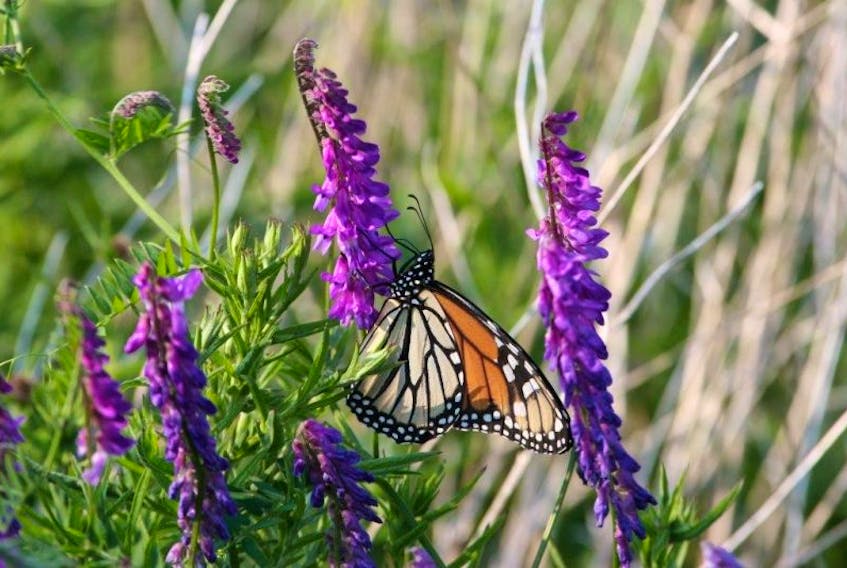Monarch butterfly numbers are looking strong for the second year in a row after many years of overall decline.
But these are complicated little animals, and it is too early to break out the champagne.
First, the good news. There’s an organization called Monarch Watch that keeps track of the numbers of this marvellous butterfly, from its wintering grounds in a high-altitude forest in Mexico to its summer habitat in the United States and Canada.
A broad network of volunteers notifies Monarch Watch when they see their first monarch of the season. Last year, the number of reports was very good, and this year it appears to be up more — though there could just be more volunteers reporting in.
Last winter, the numbers were good too. This is the best way to count monarchs. They cluster together in dense packs in trees, and people simply measure how many hectares of forest are covered in orange. Last winter the continent’s entire population of monarchs was packed into about six hectares, which doesn’t sound like much, but it was more than double what other recent years have looked like.
So, very good numbers last summer, and winter, and this summer so far. But there’s more.
Monarch Watch scientists have figured that the time when monarchs arrive in the north (meaning here and in northern states) is also a crucial factor.
“In 2012, the monarchs arrived in the northern breeding areas too soon and in 2013 too late, and in both years the population declined,” the organization writes in its latest update . “This observation tells us there is a ‘sweet spot’ or optimal set of dates to arrive in the northern breeding areas.”
They seem to have the best chance to breed if they arrive in the second half of May.
Last year, 58.7 per cent arrived in this optimal time. That was good. This year is even better, at 63.3 per cent.
But insect scientist Jeremy Kerr of the University of Ottawa warns that there’s always potential for trouble just around the corner for monarchs. The main thing now is weather.
Humans have an impact too, he notes. People get rid of milkweed, which the monarchs need for feeding and breeding, and we use pesticides that hurt them. But these changes don’t happen overnight.
“But things that can become extremely harmful with almost immediate effect, and almost everywhere, are incidents of extreme weather,” he said.
“Right now I think it’s looking good. But if we were to have a problem with a drought later in the summer for instance, or extreme heat, or if we had … extreme rainfall and high winds — these are all things that if they hit the centre points of monarch migration, you could really kill a lot of butterflies.”
The recent growth in numbers probably results from good weather where they overwinter, he said. “They’re doing great! But I think that is more good luck than good planning.”
Monarchs resonate with us because they are colourful and splashy and they make us recall past times, he said.
“For the people who are making decisions today — those people grew up with monarch butterflies being part of the environments that they used to play in. People get that we are losing things that were part of our childhoods, and that that is a really unfair thing to do to our own kids.”
Copyright Postmedia Network Inc., 2019









